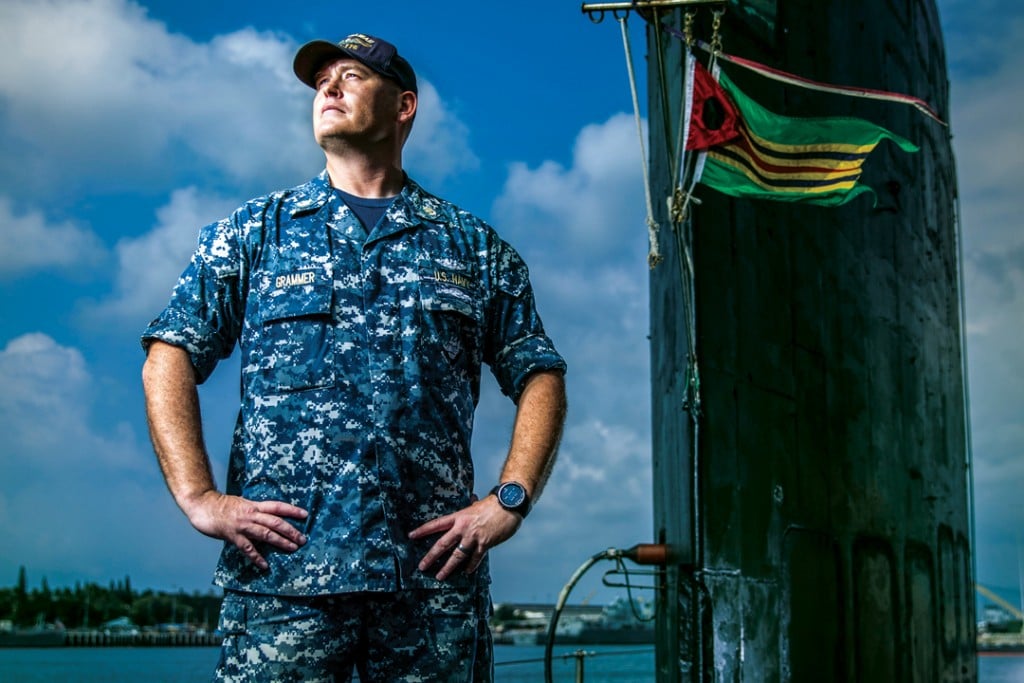My Job: Submarine Pilot

Name: Travis Grammer
Age: 38
Job: Submarine Pilot (Official Title: Fire Control Technician Leading Chief Petty Officer), U.S. Navy, USS Hawaii (SSN 776)
Start: Grammer was deeply moved by a Navy recruiting poster he saw during his senior year at Eudora High School in Kansas. “It was of a surfaced submarine and the bridge manned with the ensign flying in the wind.” Grammer enlisted in the submarine force right away, almost two decades ago.
Duties: “I’m in charge of 30-plus sailors for training, morale and welfare. I also maintain and deploy the tactical weapons system – including torpedoes, mines and Tomahawk missiles – and I pilot the ship in all ocean environments.”
After naval boot camp, Grammer spent two years in school learning about complex computer systems and their languages, electrical circuits and fiber optics, as well as the various weapons systems and how to deploy them.
“If we choose to, the Navy has a program where we can apply our training and experience toward a journeyman’s license in our field.”
Types of submarines: On the older Los Angeles-class sub, the pilot (called diving officer of the watch) instructs junior sailors – a helmsman and planesman – to manually change depth and angle, and to steer. On the newer-model Virginia-class subs, the pilot or co-pilot performs all these actions.
“The pilot on a VA-class submarine uses touch screens and joysticks like a fighter pilot to control and drive the submarine, normally using automatic digital functions. On an LA-class submarine, the controls and indicators are mostly analog.”
New Skills: “Submarines are modernizing electronic systems to keep up with commercial technologies, so we have to constantly learn new technologies. Computer software changes at least every two years.”
Challenges: “We are surrounded by the ocean at all times, which is trying to crush the submarine. You must have a healthy respect for it. One mistake can be the difference between life and death for 150 other sailors.
“The lack of communication with family is probably the hardest thing about life at sea on a submarine. No telephones. We can receive emails, but only text emails, no photos.”
Rewards: “It’s a very interesting career full of adventure, interesting people and a variety of places.” Grammer has been to Norway, Scotland, Israel, Greece, Australia, Japan, South Korea, Singapore and even the North Pole.
Pay: Those aboard submarines get special hazard pay. Single pilots begin at rank E-6, around $80,000 to $100,000 a year.






